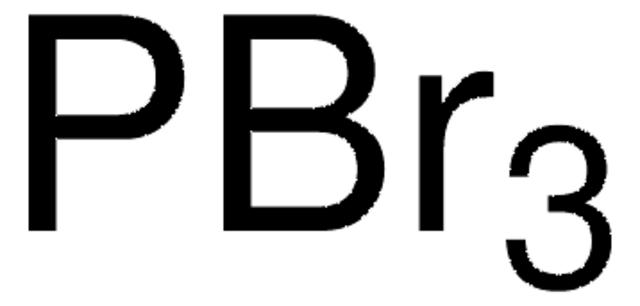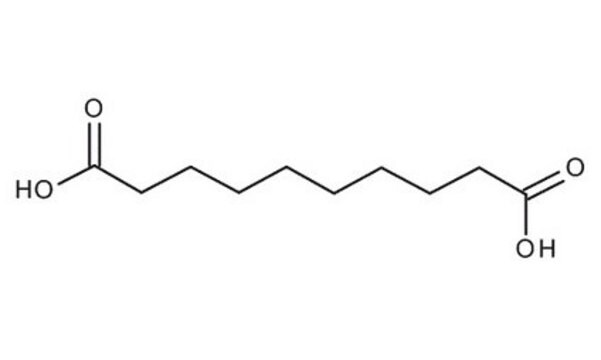177962
Undecanedioic acid
97%
Synonym(s):
1,9-Nonanedicarboxylic acid
Sign Into View Organizational & Contract Pricing
All Photos(2)
About This Item
Linear Formula:
HOOC(CH2)9COOH
CAS Number:
Molecular Weight:
216.27
Beilstein:
1780537
EC Number:
MDL number:
UNSPSC Code:
12162002
PubChem Substance ID:
NACRES:
NA.23
Recommended Products
Quality Level
Assay
97%
mp
108-110 °C (lit.)
SMILES string
OC(=O)CCCCCCCCCC(O)=O
InChI
1S/C11H20O4/c12-10(13)8-6-4-2-1-3-5-7-9-11(14)15/h1-9H2,(H,12,13)(H,14,15)
InChI key
LWBHHRRTOZQPDM-UHFFFAOYSA-N
Looking for similar products? Visit Product Comparison Guide
Related Categories
Signal Word
Warning
Hazard Statements
Precautionary Statements
Hazard Classifications
Eye Irrit. 2
Storage Class Code
11 - Combustible Solids
WGK
WGK 3
Flash Point(F)
Not applicable
Flash Point(C)
Not applicable
Personal Protective Equipment
dust mask type N95 (US), Eyeshields, Gloves
Choose from one of the most recent versions:
Already Own This Product?
Find documentation for the products that you have recently purchased in the Document Library.
Customers Also Viewed
M Matsumoto et al.
Biomedical & environmental mass spectrometry, 19(3), 171-175 (1990-03-01)
Urine from patients with calcium-4-(2,4-dihydroxy-3,3-dimethylbutyramido) butyrate hemihydrate (hopantenate) therapy during episodes of Reye's-like syndrome was found to contain a number of unusual dicarboxylic acids in high concentrations; odd- and even-numbered medium-chain dicarboxylic acids, alpha-hydroxydicarboxylic acids and beta-hydroxydicarboxylic acids. The abnormal
M Claire et al.
Connective tissue research, 4(2), 61-71 (1976-01-01)
Macroscopically lesion-free parts of human aortas with no or light lesions (group I) and advanced atherosclerotic lesions (group II) were submitted to a series of successive extractions in order to "solubilize" all the macromolecular components of the arterial wall ("chemical
Shuang Yang et al.
Journal of agricultural and food chemistry, 64(48), 9237-9245 (2016-12-10)
The current study aimed to investigate whether quercetin plays a protective role in acrylamide (AA)-induced toxicity using a metabolomics approach. Rats were randomly divided into groups as follows: control, treated with AA [5 mg/kg body weight (bw)], treated with different
Fei Li et al.
Journal of proteome research, 14(4), 1937-1946 (2015-02-26)
Colon cancer is the most common cancer and the third leading cause of cancer mortality in humans. Using mass spectrometry-based metabolomics, the current study revealed the accumulation of four uremic toxins (cresol sulfate, cresol glucuronide, indoxyl sulfate, and phenyl sulfate)
Xiaoling Zang et al.
Journal of proteome research, 13(7), 3444-3454 (2014-06-13)
Prostate cancer (PCa) is the second leading cause of cancer-related mortality in men. The prevalent diagnosis method is based on the serum prostate-specific antigen (PSA) screening test, which suffers from low specificity, overdiagnosis, and overtreatment. In this work, untargeted metabolomic
Our team of scientists has experience in all areas of research including Life Science, Material Science, Chemical Synthesis, Chromatography, Analytical and many others.
Contact Technical Service











